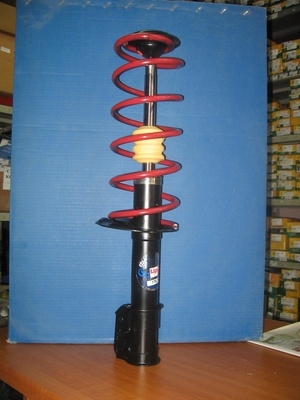
An essential part of a system of components that make up a car's suspension, shock absorbers employ a variety of moving parts, damping oil and pressurized nitrogen to manage the spring travel of each wheel on a car.
In gas-charged shocks, the travel of a piston within the oil-filled cylinder provides a carefully tuned travel distance for wheels, and provides a more smooth ride. However, there is a risk the oil will form tiny air bubbles--a process called cavitation--that can significantly reduce the efficiency of the shock. To combat this, shocks are filled with pressurized nitrogen gas.
Nitrogen is naturally occurring; in fact, nitrogen gas (N2) makes up 78.03 percent of the Earth's atmosphere, so it's readily available for manufacturing. More importantly, though, nitrogen is an colorless, odorless inert element--it's not flammable or combustible, which is important for cars. Unlike oxygen gas, which is not inert, nitrogen will not react with any of the elements that make up the moving internal parts of the shock absorber nor the damping oil. This makes today's shock absorbers reliable for many years and miles.
Although they are strictly engineered and tuned, shock absorbers will wear out and should be replaced when recommended by a mechanic. Shock failure can lead to more problems for a car.